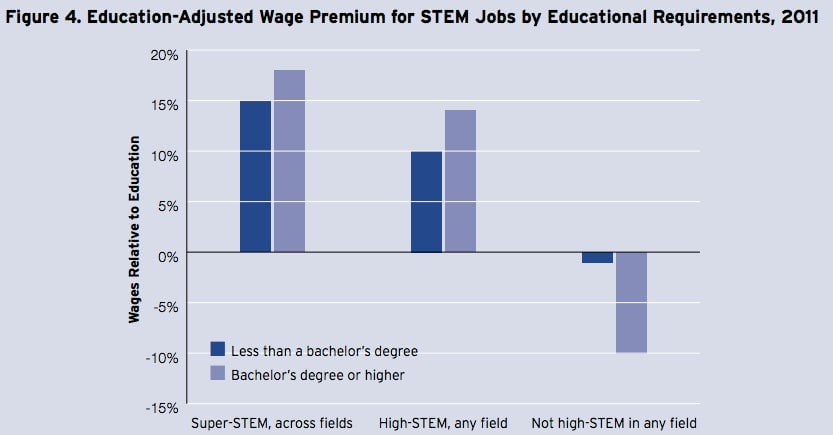Half the United States’ most skilled workers don’t have a bachelor’s degree
Think you need a college degree to be a skilled worker? Think again.


Think you need a college degree to be a skilled worker? Think again.
With so much focus on staying competitive in global markets, jobs in the US bearing the STEM—science, technology, engineering and mathematics—moniker are in high demand. A new attempt to evaluate how 26 million US STEM workers use these skills revealed that half didn’t need a bachelor’s degree.
“There’s a sense that the only route to the middle class now is a bachelor’s degree or higher, and I would say that’s the surest route,” says Jonathan Rothwell, the researcher behind the study.”But for the two-thirds of the population that does not a have a bachelor’s degree, and does not look like they are going to back to school anytime soon for a four-year degree that will cost tens of thousands of dollars and result in massive debt, I’d like people to be aware there are other ways to acquire valuable skills.”
Consider machining, often done today with sophisticated automated mills. The people who use drafting software to program those mills aren’t necessarily considered STEM workers, but it takes a fair mix of computing and engineering know-how to run those machines. Scholars at the Brookings Institution took advantage of a massive survey of US workers to find other jobs that fit the STEM bill but aren’t normally classified that way, including the technicians who install, maintain and repair machinery across a variety of sectors, health-care workers, and even car mechanics.
While the findings probably won’t surprise anyone who’s looked under the hood of a late-model car, previous attempts to classify skilled workers have focused on credentials, not what they need to know to do their jobs. But it may be time to rethink that classification. Just like STEM jobs performed by college graduates, these “blue collar” STEM jobs offer a solid wage premium over the average earnings of people with a similar educational background. On the other hand, a job that doesn’t require a specialization in STEM fields earns less than the average, no matter the education level:

Notably, the actual composition of this workforce doesn’t jibe with the way companies and the government attempt to find and develop skilled workers. For instance, only 26% of workers with any one STEM skill have a STEM bachelor’s degree, but most of the money spent on increasing the amount of STEM workers is focused on four-year college programs. Rothwell says more attention, and funding, needs to go to community colleges that offer vocational training in STEM fields.
On the company side, STEM workers had an average over a year of on-the-job training. But surveys show that companies have been cutting back the training they give to their employees, even as they complain about a skills shortage.
The emphasis on this level of skill has grown in places like Mexico and China where US firms outsource their manufacturing, suggesting that developing a large “blue collar” STEM sector could help make the US more competitive lower on the value chain.
“One of the reasons why is [Mexico and China] have a preponderance of very highly skilled production workers,” Rothwell says. ”Maybe they would be at the community college level here in the US, but that’s still a fairly extraordinary amount of knowledge.”